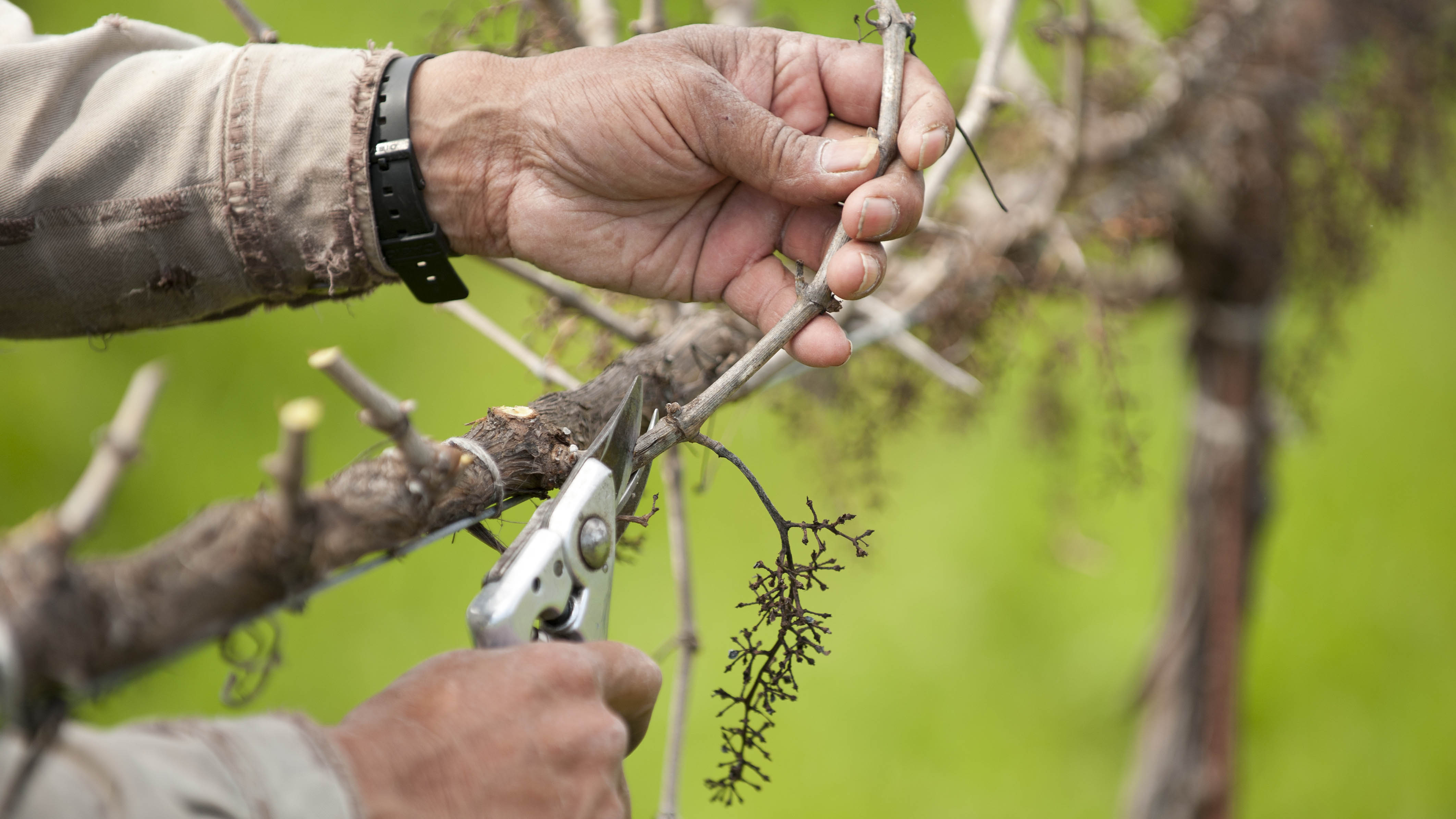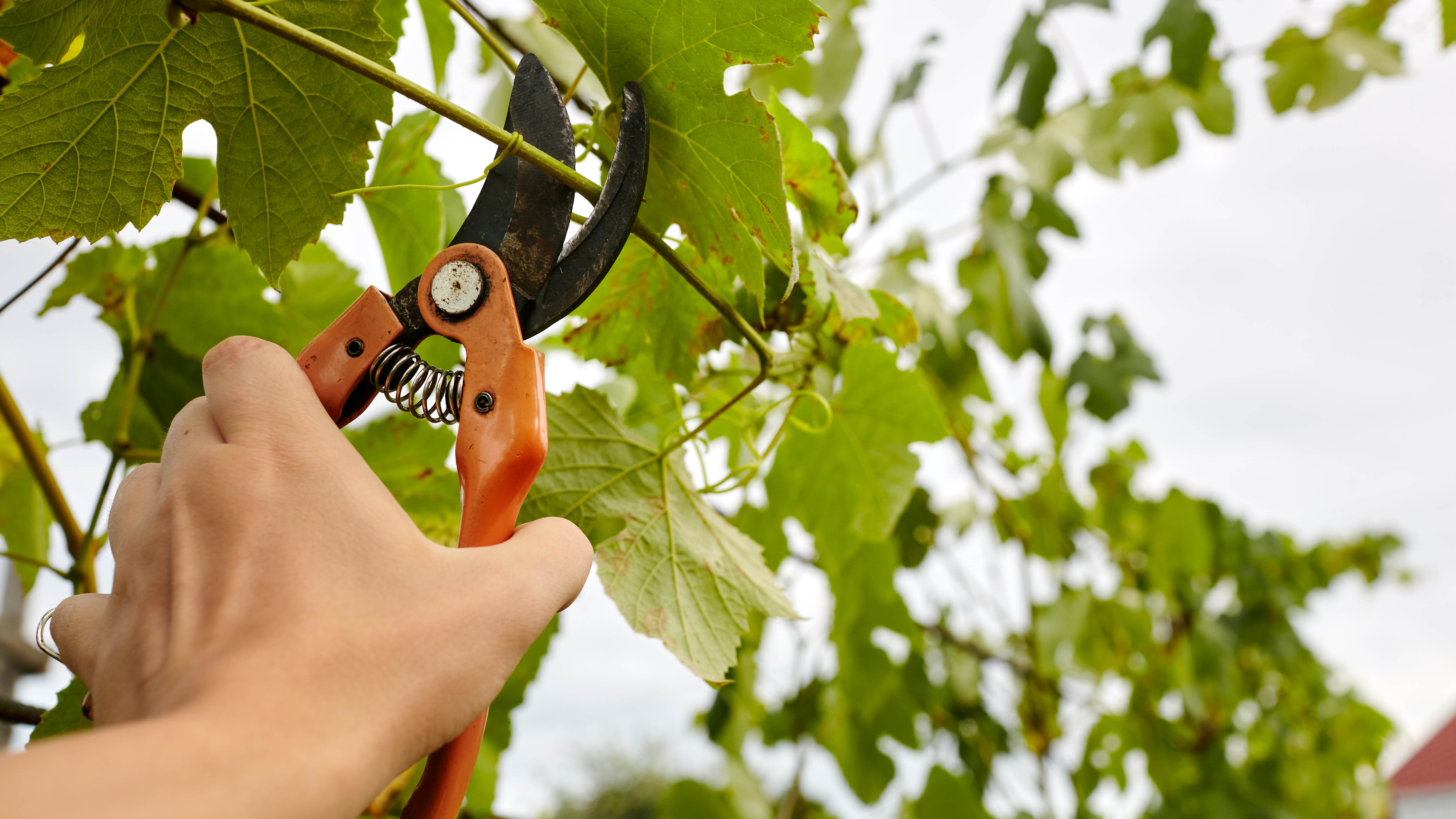How to prune grapevines and when to do it
Here’s how to prune grapevines for better fruit

If you love to grow fruit in your backyard, odds are you need to know how to prune grapevines. It’s really rewarding to grow your own grapes, however maintaining these plants isn’t as straightforward as others. They require support as they grow, need protection from disease and pruning is essential as well to help them flourish in the next season.
To help you keep your grapes in good shape, we’ve pulled together this guide on how to prune grapevines. We will take you through what to do step-by-step as well as when you should be doing it for the best results. Pruning is essential to get the best grapes from your grapevine, so read on if you want a more successful harvest. You can also check out the 7 pruning mistakes you never knew you were making before getting started.
If you need to give some attention to other areas of your garden, be sure to check out how to prune hydrangeas And if you have roses, learn how to deadhead roses to keep them blooming and how to prune roses.
How to prune grapevines
Ideally you’ll want to prune your grapevines at different stages of the year with differing methods. The most important prune is arguably during its dormancy in late winter. This will essentially encourage more growth next season.

1. First, grab a pair of your best pruning shears — ideally you will want to use bypass pruners rather than anvil as you’re working on a live plant. If you’re dealing with wood which is over three years old, you might need a lopper to hand as well.
2. Next, cut back last summer’s growth, including any dead wood or old shoots. These will no longer grow grapes and so need to be removed.
3. It might seem overly aggressive, but you need to basically cut back the plant to its initial frame to give it the best chance of growth next season. Cut back to 3-4 nodes or buds per shoot. Don’t worry about the plant — grapevines are pretty hardy and generally the more you prune back the better. Make sure the main cane is still secure and supported by the wire or trellis.
Get instant access to breaking news, the hottest reviews, great deals and helpful tips.
4. A couple of months later, you will notice a lot of fresh growth, and that’s when it’s time to get your pruners out again. Cut away anything which isn’t carrying grapes or forming part of the main structure. Each shoot should still have around 15 leaves though — it needs to absorb adequate sunlight to ripen the grapes.

5. While you’re here, untangle any shoots to better separate the grapes. This will provide more air circulation and increase exposure to sunlight as well. It also makes it easier to prune and manage going forward.
6. You might be proud of the bunches of grapes developing so far, but you are going to have to cut some of those away to promote the growth of those that remain. Grapevines often produce too many grapes which means the size and flavor suffers. So, you need to reduce the bunches to about one-two per stem. You’ll thank us later.
7. Finally, come the summer you’re going to want to dip in with your shears once more. Start by trimming back any fresh growth which doesn’t need to be there, essentially repeating step 4 again.
8. Next, you’re going to want to cut back your grapes once again. Take the pruners and reduce each bunch by about half. As before, this will focus the growth on what remains.

And there you have it, your grapevines should now be in tip top condition and ready to bear the best fruit possible. You will want to harvest the bunches about 30-60 days after they form. Look out for the skins to change color to indicate they’re ready.
When should you prune grapevines?
At minimum, grapevines should be pruned once a year in the late winter during dormancy (late February or early March). This will essentially remove last year’s growth and ready the plant for next season.
It’s good practice to revisit and trim away any excess growth during the late spring and summer months as well. Cutting away some of the grapes will also result in a more promising harvest down the line.
Here's how to prune lilacs to get the best blooms and how to prune tomato plants for a juicy harvest.
If you're also interested in indoor plants, check out our guides on how to care for succulents and how to repot succulents. We also cover how to care for air plants.

Katie Mortram used to be a Homes Editor for Tom's Guide, where she oversaw everything from kitchen appliances to gardening tools, as well as smart home tech. Specializing in providing expert advice for cleaning and home manintenance, she now works as Household Advice Editor for Good Housekeeping.
